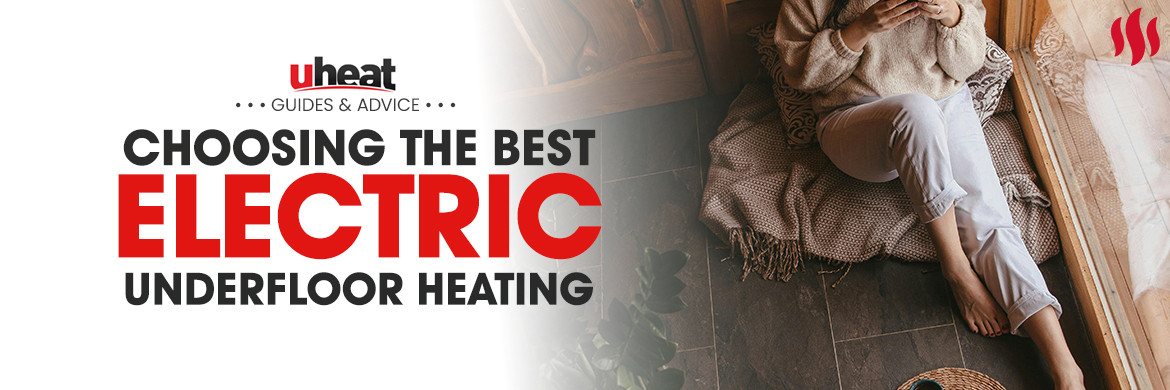Best Electric Underfloor Heating Systems 2025 | FlexHeat Guide
Posted by Uheat Underfloor Heating on 17th Jan 2025
Electric underfloor heating is an efficient and cost-effective way to keep your home warm, especially during colder months. It not only provides consistent and comfortable heat but also helps in reducing your carbon footprint. With various options available, selecting the right system can be challenging. This comprehensive guide will help you understand electric underfloor heating and assist you in choosing the best system for your needs.
What is Electric Underfloor Heating?
Electric underfloor heating consists of heating cables or mats installed beneath the floor surface. When powered, these elements warm the floor, and the heat radiates upwards, ensuring even distribution throughout the room. This system is versatile and can be installed under various flooring types, including tiles, laminate, and carpet. It's particularly popular in bathrooms and kitchens for the comfort of warm floors.
How to Choose the Best Electric Underfloor Heating System
-
Determine the Required Wattage
The necessary wattage depends on the room's size and insulation level. Well-insulated rooms may require lower wattage, while areas with higher heat loss need more power. For instance, Flexheat offers heating mats with different wattages suitable for various scenarios:
- 100W/m² Mats: Ideal for well-insulated rooms with an existing heat source.
- 140W/m² Mats: Suitable for laminate and engineered wood flooring.
- 160W/m² and 200W/m² Mats: Best for areas with higher heat loss, such as conservatories.
-
Choose Between Heating Mats and Cables
The choice between heating mats and cables depends on the room's shape and the type of flooring:
- Heating Mats: Consist of pre-spaced cables attached to a mesh, making them easy to install in regularly shaped rooms. They are compatible with various floor finishes, including tiles and laminate.
- Heating Cables: Offer flexibility in installation, making them suitable for irregularly shaped rooms. They can be laid in different configurations to accommodate unique layouts.
-
Select an Appropriate Thermostat
A thermostat controls the temperature of your underfloor heating system, ensuring comfort and energy efficiency. Programmable thermostats allow you to set different temperatures for various times of the day, optimizing energy consumption and reducing heating costs.
-
Consider Room Size
The size of the room influences the heating system's efficiency. Smaller rooms may require less powerful systems, while larger areas need more robust solutions to ensure consistent warmth throughout the space.
Flexheat Products
- Underfloor Heating Mats: Designed for straightforward installation under various floor types.
- Underfloor Heating Loose Cables: Provide flexibility for rooms with complex layouts.
- In-Screed Floor Heating Cables: Ideal for installations where the heating cable is embedded within a screed layer.
- Under Wood/Laminate Heating Mats: Specifically designed for use under wood and laminate flooring.
- Under Vinyl & Carpet Heating Mats: Suitable for installations beneath vinyl and carpeted floors.
FAQs
- Is electric underfloor heating expensive to run?
- The running cost depends on factors like room size, insulation, and usage patterns. However, with proper insulation and a programmable thermostat, electric underfloor heating can be an energy-efficient option.
- Is electric underfloor heating worth it?
- Yes, it provides consistent and comfortable heat, frees up wall space by eliminating radiators, and can potentially increase property value.
- Is electric underfloor heating more efficient than radiators?
- Electric underfloor heating offers more even heat distribution and can operate at lower temperatures than traditional radiators, leading to potential energy savings.
- What can go wrong with electric underfloor heating?
- Potential issues include faulty thermostats or damaged heating elements. Ensuring professional installation and regular maintenance can mitigate these risks.
- Is underfloor heating better than radiators?
- Underfloor heating provides uniform heat distribution and can be more aesthetically pleasing, as it eliminates the need for visible radiators. However, the best choice depends on individual preferences and specific property requirements.

